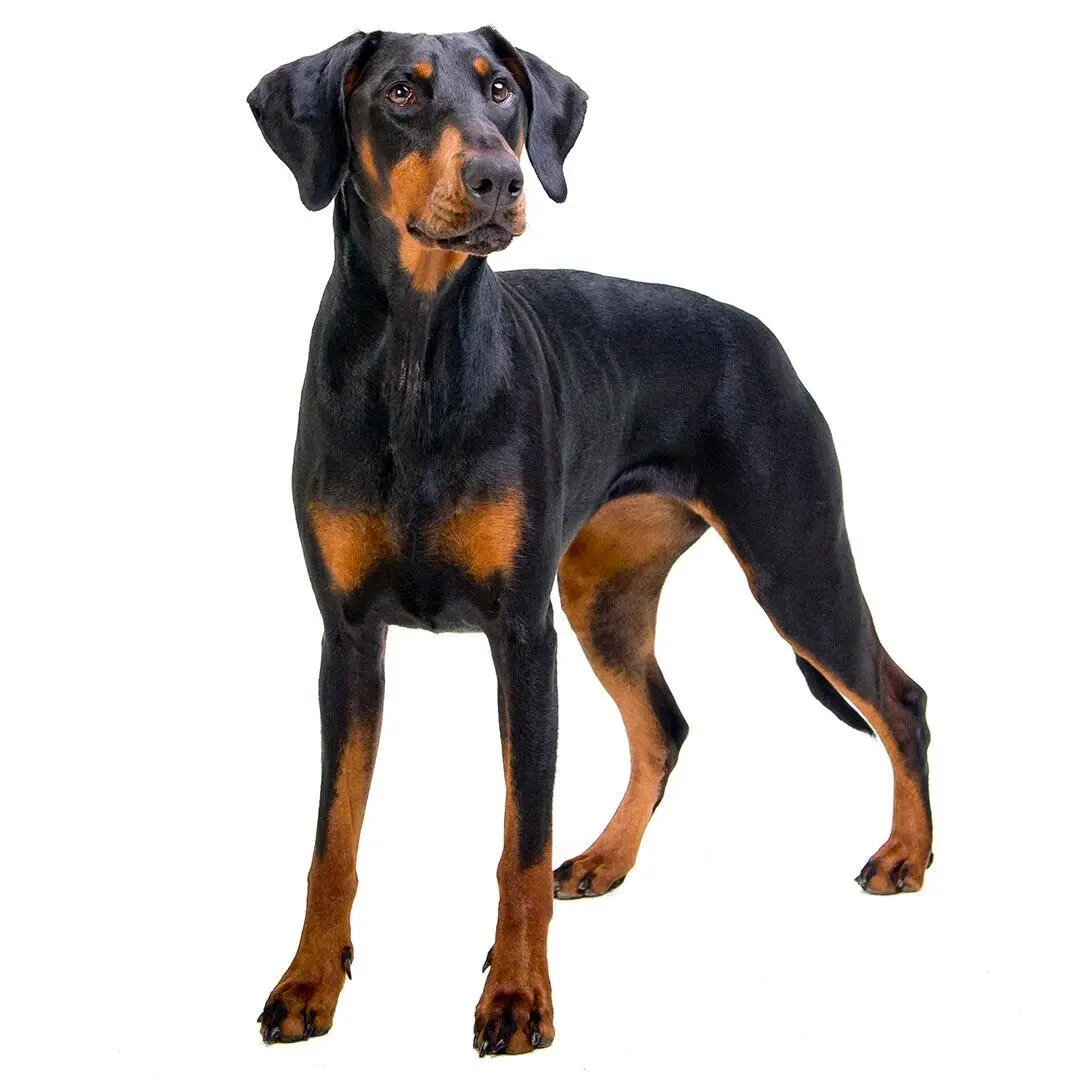
Dobermann
Dobermanns have a muscular body and a short coat. They are very loyal and intelligent.
Extended Description
The Dobermann is a large, powerful dog breed known for its loyalty and intelligence. Originally bred in Germany by Karl Friedrich Louis Dobermann in the late 19th century, this breed was designed to be both a guard dog and a companion. Dobermanns are known for their sleek, athletic build and short, shiny coat. They are highly trainable and excel in various roles, including police work, search and rescue, and as service dogs. Dobermanns are affectionate with their families but can be wary of strangers, making them excellent protectors.
Interesting Facts
The Dobermann is often referred to as a "velcro dog" because of its strong desire to stay close to its owner at all times.
Care Recommendations
Dobermanns require regular physical exercise to maintain their muscular build and prevent boredom. This can include long walks, runs, and interactive play. Their short coat is low-maintenance but benefits from regular brushing to keep it shiny and healthy. Early socialization and consistent training are essential to ensure they are well-behaved and can manage their protective instincts appropriately. Regular veterinary check-ups are important to monitor their health, especially for heart conditions and hip dysplasia.
Temperament
Dobermanns are loyal, intelligent, and protective. They are known for their strong attachment to their families and their alertness.
Health Issues
They are prone to heart conditions, hip dysplasia, and bloat. Regular vet visits are crucial to monitor their health.
Living Conditions
Dobermanns adapt well to both apartment living and homes with yards, as long as they receive enough exercise.
Training Tips
They respond well to positive reinforcement and require consistent training to manage their protective instincts.
Exercise Needs
Dobermanns require regular exercise, including daily walks, runs, and activities that challenge their intelligence, such as obedience training.
Return to Other Breeds



